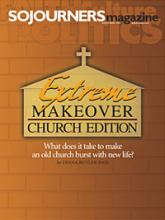Etched into the rustic wooden sign in front of Southside Presbyterian Church in Tucson, Arizona, are symbols from the local American Indians, the Tohono O’odham—cacti, clouds, and a figure inside a circle—along with three crosses on a hill and the proclamation, “Serving all the people of God.”
Like its sign, Southside—a part of the Presbyterian Church (USA)—draws from surrounding cultures in its ministry and membership. “We take care of each other and everyone else we possibly can,” said Linda Ray, a church member and volunteer.
Southside’s roughly 230 members support a variety of church programs. A gospel choir enlivens Sunday morning music. A program for the homeless and migrants opens church doors on weekdays to offer showers, a meal, and an occasional haircut. Southside also believes it was the first church to be a haven for refugees fleeing Central America’s civil wars in the 1980s, Ray said, igniting the sanctuary movement, which grew to include hundreds of churches. The church works with local and national coalitions for immigration reform, an end to capital punishment, and a variety of other causes.
Southside was founded in 1906 as a mission church to the Tohono O’odham. The church has gained in Latino, African-American, and white membership as the character of its neighborhood changed, said associate pastor Brandon Wert. Wert said there is a “checkered history” of white Christian evangelism of American Indians that must be acknowledged. Yet, many O’odham families have stayed in the church for generations, and all the church’s cultures are represented in local Presbyterian leadership, he said.
Read the Full Article

